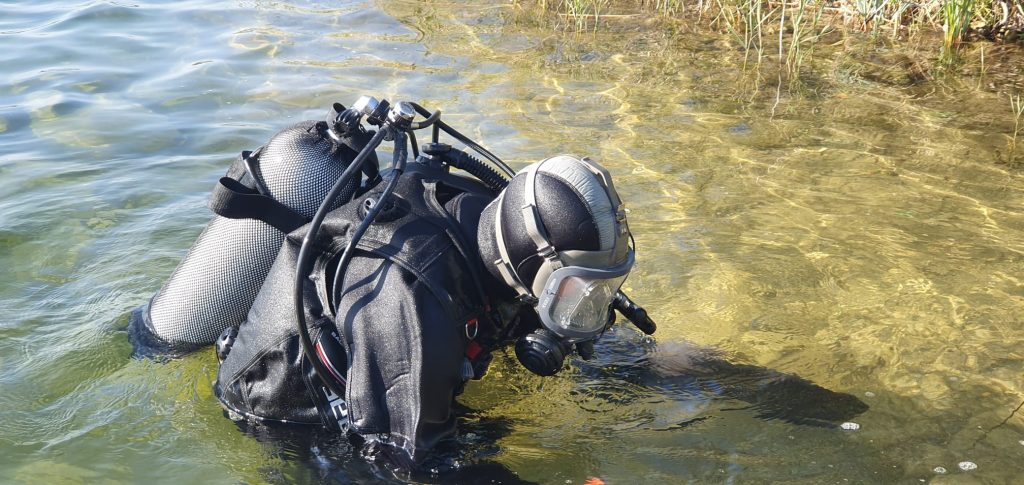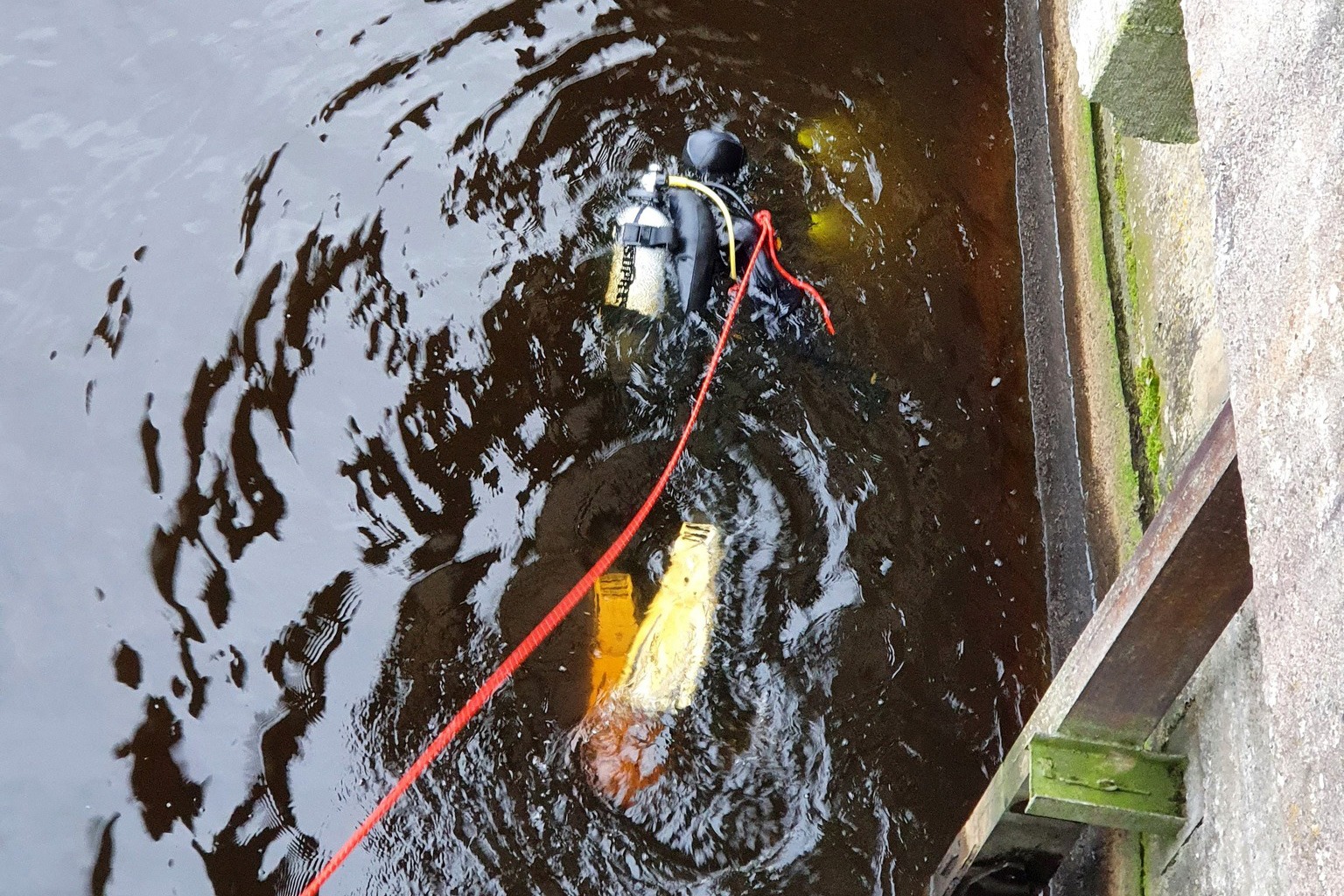The divers of the "Daivings" diving club, in cooperation with the specialists of the Dronelab company, offer accurate and efficient calculations of flow and flow speed in watercourses - rivers and canals.

The company's experienced specialists carry out detailed hydraulic measurements in rivers and streams using traditional methods, which include:
- Width and height measurement techniques:
- Application of lines, cross-sections and other geodetic methods to accurately determine the cross-sectional area of a watercourse.
- Processing of measured data using specialized software.
- Current meters:
- The use of mechanical or acoustic current meters to accurately determine the rate of water flow at various points in a watercourse.
- Processing of the measured data to obtain the average flow rate in the watercourse.
Flow calculation:
- Determining average flow velocity by combining data from stream gauges and hydraulic models.
- Calculation of the cross-sectional area of water based on data of width and height measurements.
- Flow calculation by multiplying the average flow rate by the cross-sectional area of the water.
Preparation of the report:
- Detailed review with measurement results, calculations and conclusions.
- Recommendations for further watercourse management and hydrotechnical structures design are given.
- The report is compiled with the opinion of a certified specialist.
Advantages of traditional methods:
- Availability: These methods are widely applicable and do not require the purchase of expensive drone technology.
- Experience: Dronelab specialists have extensive experience in the application of traditional methods, ensuring accurate and reliable results.
- Adaptability: Traditional methods can be adapted to different watercourse conditions and hydraulic measurement tasks.
Application:
- Designing of hydraulic structures: Discharge and flow rate data are critical for designing bridges, dams, levees, and other hydraulic structures.
- River management: Flow rate data can help identify erosion risks, sediment accumulation, and other hydrodynamic processes affecting the river bed.
- Environmental monitoring: Flow data can be used to assess water quality, pollution prevalence and ecosystem health.
- Research: Traditional methods are still widely used in the study of hydrodynamic processes and modeling of watercourses.
How we can help you:
- Consultation on the specifics of your project and data needs.
- Development of a customized service offering based on your budget and timeline.
- Recruitment of a team of experienced hydraulics and hydrologists.
- Timely delivery of accurate results and detailed reports.
Summary of Throughput and Flow Rate Calculations
Dronelab offers accurate and efficient flow and flow rate calculations in watercourses using new technologies as well as traditional methods.
Advantages of measurement technology:
- Efficiency
- Safety
- Availability
- Detailing
Advantages of traditional methods:
- Availability
- Experience
- Adaptability
Application:
- Designing of hydrotechnical structures
- River management
- Environmental monitoring
- Research
Contact Dronelab SIA to receive a detailed offer and learn more about throughput and flow rate calculations!
How Dronelab can help you:
- Consultations
- Custom offer
- A team of experienced specialists
- Accurate results and detailed reports
Assisting divers in flow and flow rate measurements
Flow and flow velocity measurements may involve divers in difficult conditions.
Dronelab works with experienced divers who can:
- Placement and collection of flow meters in hard-to-reach places, for example, under water body bridges or dam gates.
- Study of water depth and bed topography to more accurately determine the cross-sectional area of water.
- A visual inspection of the watercourse to identify potential obstructions or other problems that could affect the accuracy of the measurement.
The recruitment of divers can significantly increase the efficiency and accuracy of data acquisition in difficult hydraulic conditions.
By adding diver services to Dronelab's offering, customers can:
- Receive comprehensive hydraulic data on waterways, including hard-to-reach areas.
- Increase the accuracy and reliability of measurements.
- Optimize the data acquisition process, saving time and resources.
Dronelab – Your reliable partner in watercourse data acquisition and analysis, involving both drones and divers.
- Find out more about the flow measurements of the company, Dronelab SIA, on the website, article here

